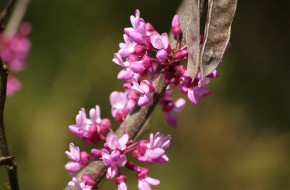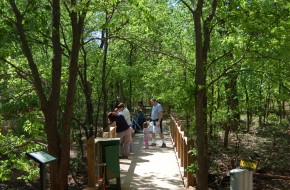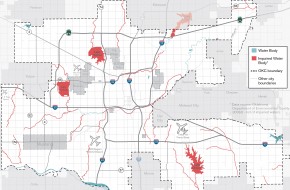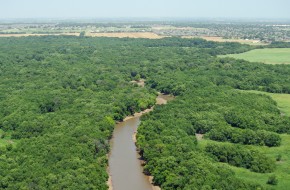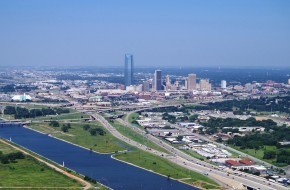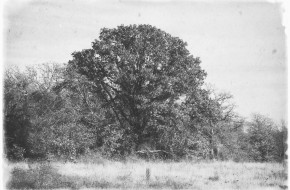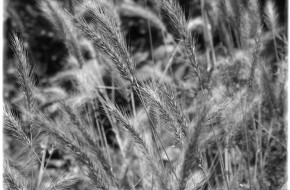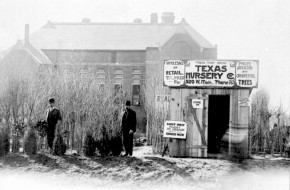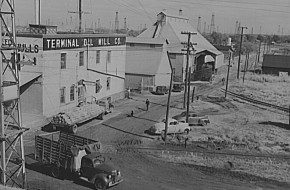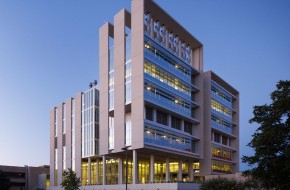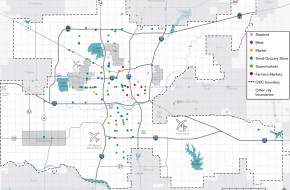Our Situation
Land
Like any city, Oklahoma City has an enormous, and inevitable, impact on its natural environment. Significant issues that we must address include the impact of development on natural features, loss of prime farmland, loss of natural features, and pollution. These issues and some solutions are discussed here.
Development. Oklahoma City’s dispersed development pattern consumes open space, modifies floodplains, and disrupts other natural features and processes. This pattern increases threats to sensitive species, reduces biodiversity, and alters ecosystem functionality.
Agricultural Land. Dispersed development patterns consume prime agricultural lands. Because of its large area, the city encompasses extensive agricultural resources and active farming. Yet, of our prime farmland, 46% has already been converted to residential use (including acreages) and another 25% is zoned residential. With local and global food security issues on the horizon in the coming century, conversion of prime farmland to other uses should only be done in extreme circumstances.
Ecosystem Decline. In addition to farmland, our expansive city also incorporates extensive natural areas. One unique feature is the Cross Timbers, a mix of savanna, glade, and woodland that marks the transition between the Great Plains and eastern forests. The city also includes expansive prairie grasslands, which are the most altered and endangered ecosystem on the planet, and a variety of streams and wetland environments. Successful nature conservation requires not only that ecosystems be protected, but also that they be contiguous, with corridors for wildlife movement and sufficient space for plant and animal populations to flourish. Unmanaged development fragments ecosystems, making them less viable for wildlife and less useful and attractive to people.
Brownfields. Brownfields are properties that are or may be contaminated with environmental pollutants. Cleaning up abandoned or vacant brownfields can return the properties to productive use. Successful examples, such as the Skirvin Hilton Hotel and various MAPS projects, have increased awareness of brownfields and the federal, state, and city resources available. But past history, uncertainties about costs and liabilities, and lender and investor caution continue to hinder brownfield redevelopment. For projects not participating in the federal brownfields program, local regulations and due diligence requirements are inadequate for creating a predictable marketplace for brownfield development.
Land Conservation. Conservation is a solution to many of the environmental issues identified in greenokc. Conservation easements, for example, preserve landscapes while offering economic benefits to developers and landowners. Yet Oklahoma City has lagged in this area, reserving only about 40 acres of land through easements. In our own region, Edmond and Norman have been more effective in conservation through planning and acquisition of important land with local land trusts and can serve as examples for improvements in our city.
Water
The extent and nature of urban development has a major impact on Oklahoma City’s critical surface water and groundwater resources. Key water-related issues include water quality, groundwater conservation, and the amount of impervious coverage, which affects both surface and groundwater.
Surface Water. According to 2011 data from the Oklahoma Department of Environmental Quality, 70% of Oklahoma City’s major streams and lakes fail to meet water quality standards. These problems are largely caused by stormwater runoff that discharges contaminants into waterways and by inappropriate land use and management adjacent to surface water bodies.
Groundwater. A stable supply of water below ground is necessary to support agriculture, rural development, and some domestic water users. In Oklahoma City, our groundwater appears to be receding. According to a study released in 2014 by the U.S. Geological Survey and the Oklahoma Water Resources Board, the average depth to groundwater increased by 3.75 feet between 1987 and 2009. Based on the current maximum pumping rates allowed by the State of Oklahoma, the study indicated that if the maximum allowable number of wells is installed, the aquifer could be in danger of depletion in 35 to 41 years.
Impervious Coverage. Impervious coverage refers to land covered by hard surfaces, preventing the ground from naturally absorbing rainwater, which is a major cause of declining water quality. Research indicates that when 10% of a watershed has been converted to impervious surface, significant ecological damage has already been done. According to the City’s Health Impact Assessment, of the city’s 40 sub-watersheds, 16 are above 10%, and eight are between 5% and 10%.
Drainage solutions in use today have improved drainage but come with undesirable side effects. For example, channelization and other “hard” engineering solutions can speed the flow of contaminated runoff water into streams and lakes. Methods that manage runoff by mimicking landforms and natural drainage patterns can provide mitigation but are not widely used in Oklahoma City.
Air
The health effects of motor vehicle emissions is a serious issue for all cities, and especially Oklahoma City, where low population density contributes to the relatively high amount of vehicle travel for the movement of people and freight. Oklahoma City is already at risk of violating air quality standards, and compliance could become even more difficult if national concerns about climate change produce more stringent emissions standards in the future. Oklahoma’s unusual weather patterns during the last few years give credence to these concerns. The city’s primary air quality issues involve ground level ozone, greenhouse gases (GHG), and air temperature.
Ozone & Greenhouse Gas Emissions. Ozone is a chemically active form of oxygen produced when motor vehicle and industrial emissions react with sunlight. Far in the upper atmosphere, ozone absorbs harmful ultraviolet radiation from the sun. However, when concentrated at ground level, it harms human respiratory systems and environmental health. During the last decade, our metropolitan area has seen a steady increase in the number of days per year that ground level ozone was listed as the main pollutant on the Air Quality Index.
Air Temperature. In addition to the impact of GHGs on overall climate, Oklahoma City’s urbanized area creates a “heat island” that is 3.6ºF warmer during the day and 5.4ºF warmer at night than surrounding rural areas. This is caused by lack of vegetation and a high percentage of surfaces that absorb heat during the day and radiate it at night. Heat islands can impact personal, environmental, and economic health by contributing to heat-related illnesses, impaired air and water quality, and increased energy consumption.
Oklahoma City lies within the Cross Timbers region, an ancient ecosystem that spans much of central Oklahoma into eastern Kansas and central Texas. The Cross Timbers is a complex mosaic of savanna, glade, and upland deciduous forest dominated by post oak and blackjack oak. Historically, grasslands were interspersed throughout the oak forests, creating a rich transitional area between the eastern forests and the Great Plains.
This ecosystem once supported vast assemblages of wildlife, including great herds of bison and other grazing animals. Even today the remaining Cross Timbers area serves as habitat for significant populations of mammals and birds, which benefit from the area’s rich diversity of flora.
Forest
The relatively short, gnarled trees of the Cross Timbers belie its status as ancient woodland. Its appearance is less dramatic than other ancient North American forests. Trees average only 15-40 feet in height and 10 to 20 inches in diameter; however, many existing post oaks and blackjack oaks are 200 to 400 years old. As a result of its diminutive size, the Cross Timbers remains underappreciated as an ecosystem, and most of the forest has been cleared for agriculture. Paradoxically, the modest stature of these trees has served to protect remnant stands of ancient forest, since the forests’ noncommercial timber value limits industrial logging. Important patches remain, especially on steep or rocky terrain.
The Cross Timbers are unique in the world for their assemblage of plants and animals. Existing stands of forest in Oklahoma City have been mapped and identified as Environmentally Sensitive Areas in planokc. Creating wildlife corridors to connect remnant patches will help safeguard the viability of this important ecosystem.
Grasslands
Globally, grasslands are the most altered and endangered of all ecosystems. Temperate grasslands, which include the North American Great Plains, are even more vulnerable, with only about 3% protected from development. Though data on the current range of grasslands exist for most other central U.S. states, no maps or range estimates are available for Oklahoma. Consequently, the extent of remaining prairie in Oklahoma City is unknown.
Historical data indicate that tallgrass prairie once dominated the central portion of Oklahoma from north to south. Reaching heights of nearly 10 feet, the primary species were big bluestem, little bluestem, Indian grass, and switchgrass. Numerous other perennial grasses and forbs were present. In fact, as many as 300 different plant species can grow in just three acres of North American tallgrass prairie, and insect populations can be as high as three million individuals per acre.
The decline of prairie extent in the United States ranges from 80% to 99%, primarily due to plowing and urbanization. However, ranching has preserved tallgrass prairie in some parts of Oklahoma. A major benefit to conservation of prairie is its compatibility with ranching when appropriate management practices are employed.
Impacts
Humans have impacted the landscape in central Oklahoma for thousands of years. The first prehistoric Native Americans arrived in Oklahoma 10,000 to 20,000 years ago, and their arrival corresponded with significant changes to the fauna of the region, resulting from hunting, gathering, and use of fire to modify ecosystems. Starting in the 1830s, the relocation of Native American tribes from other regions into Oklahoma and the large influx of European settlers in the late 1800s initiated many of the trends we see today.
- Wildfire: In addition to fires started by lightning, fire was deliberately used by Native Americans to maintain open grasslands and savannas, with new regrowth attracting a wide variety of grazing animals. However, beginning with European settlement and fragmentation of the grassland, controlled fire practices dwindled. As a consequence, growth of denser forests and build-up of underbrush lead to hotter, more damaging fires when they eventually occurred. This pattern continues today.
- Herbivory: The rich faunal heritage of the plains included many grazing and browsing animals. This assemblage included bison, elk, mule deer, white-tailed deer, and pronghorn antelope, as well as many small animals.
- Drought: Recurrent droughts tend to limit native vegetation, causing periods in which vegetation abundance and range can decrease.
- Grazing by domestic animals: Less than optimal management practices, where domestic grazing animals feed on grasslands at too high a density, for too long, or during the wrong season, can lead to overgrazing. Overgrazing causes significant changes to the ecological community, as well as erosion. However, grazing can be consistent with positive environmental health in grasslands, when grazing practices mimic those of wild herbivores.
- Decline of keystone species: Keystone species, which are species that play a disproportionately large role in maintaining ecosystem function, included buffalo and prairie dogs on the Great Plains. Loss of keystone species can have major impacts on animal and plant communities and on ecosystem processes, such as groundwater recharge.
- Invasive species: Overgrazing can prime the land for invasion by non-native plant species that are often less palatable to grazing animals. Invasive species are one of the primary causes of biodiversity loss, as non-native species may out-compete native species and disrupt ecological communities.
- Plowing: Plowing causes some of the most dramatic impacts on the landscape. Destruction of the native prairie ecosystem has wide-ranging effects, altering biodiversity, erosion, soil fertility, and groundwater hydrology.
- Urbanization: Together with plowing, urbanization is among the most detrimental forces on native ecosystems. Urbanization leads to changes in ecosystem dynamics, nutrient cycles, groundwater hydrology, and a host of other natural processes. These factors are the primary concern of greenokc
Energy and Buildings
Nationally, buildings account for a larger share of total energy use and carbon dioxide emissions than the transportation and industrial sectors, including over 70% of electricity consumption. The number of “green” buildings in the city certified under the LEED (Leadership in Energy and Environmental Design) program is increasing, led by the achievement of gold level certification by the Devon Tower and Oklahoma Medical Research Foundation’s Research Tower.
While headline projects like these provide excellent models for what can be done, sustainable practices and their benefits are within reach of everyone. However, many of our buildings use outdated design and construction techniques and materials. For example, conventional development continues to favor low-density, single purpose buildings over vertically integrated structures. This increases the amount of exterior wall in relation to floor area and, consequently, air conditioning requirements. Poor ventilation coupled with interior finishes like carpeting, paint, and adhesives that contain chemicals can degrade indoor air quality. Outside the building, we use landscape materials that require a great deal of water and energy to maintain, in turn requiring civic infrastructure investments that lead to higher costs for water customers. All too often, projects focus on short-term finance, using techniques and materials that appear economical up front but are ultimately very expensive to maintain over the life of a building.
People often equate “green” or “sustainable” design with exotic technologies and high cost. Yet buildings that lack green certification can also benefit from improved efficiency. Application of the EPA’s Sustainable Design and Green Building Assessment to Oklahoma City found a variety of barriers, many of which can be addressed through policy change and incentives. We can also provide an example to developers and save taxpayers money by adopting sustainable and green building standards in municipal buildings.
Local Food Systems and Accessibility
Two food issues affect Oklahoma City: food accessibility and locally produced food. Some Oklahoma City neighborhoods lack access to fresh, healthy, and affordable food. These neighborhoods, referred to as “food deserts” by the U.S. Department of Agriculture, are low income communities with few grocery stores, supermarkets, or farmers markets. Lack of grocery access leaves people with few options, leading to higher consumption of unhealthy foods from convenience stores and fast food restaurants.
Locally produced food, which is locally grown and/or processed, benefits people, the economy, and the environment. Consuming sustainably grown fresh fruits and vegetables benefits health, and the economy benefits because a higher percentage of money remains in local circulation when food is purchased directly from the producer. Environmental benefits derive from decreased transportation emissions and because many small producers use more environmentally friendly growing practices. Due to these benefits, demand for locally grown food is high, and it generally outpaces supply in Oklahoma City. More must be done to stimulate production and distribution, particularly of fruits and vegetables, which are in high demand.
























 Download PDF
Download PDF